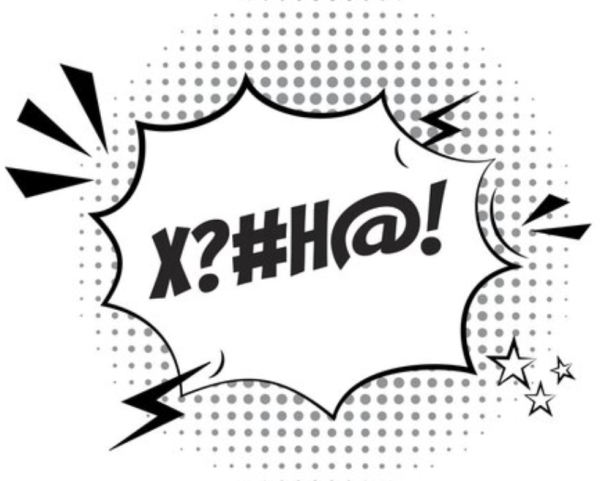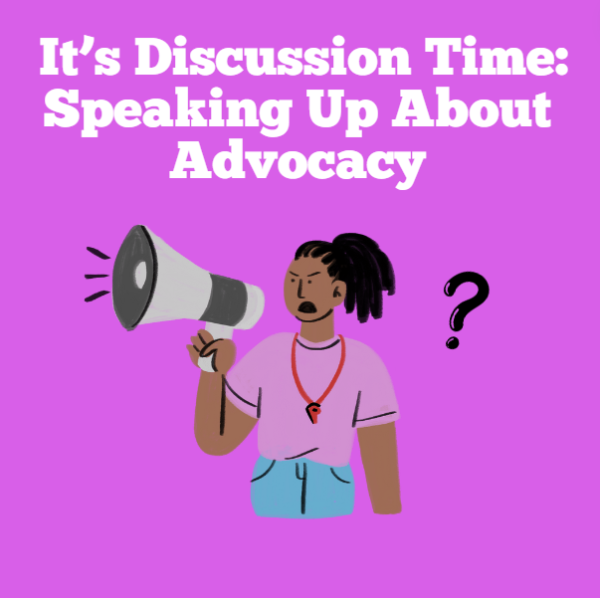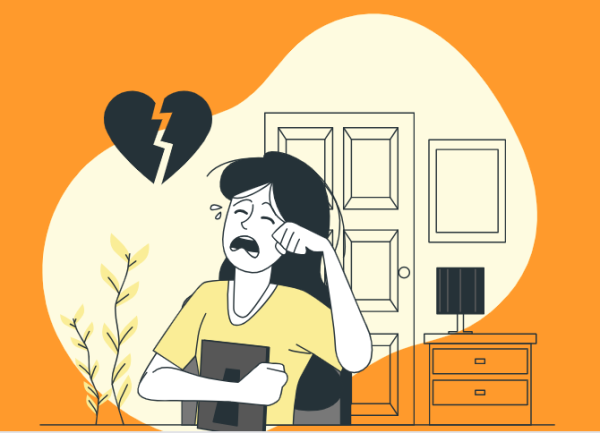An argument for and against a $15 federal minimum wage
Pro: A raise in minimum wage is a raise for all
by Melina Tisopulos
On Friday, Mar. 12, the Senate voted to implement an increased federal minimum wage provision into President Biden’s new Covid relief package. If approved, the provision would progressively make the crucial minimum wage increase from the current $7.50 an hour to $15 by 2025. Ultimately, the proposal was rejected by 58 to 42 votes, a disheartening outcome to nearly half of American workers who all earn under the proposed $15 an hour. For many, such as a single mother working multiple jobs, or a young graduate struggling to pay off student loan debt, the minimum wage increase was the difference between poverty and prosperity. In 2021, it is nearly impossible to achieve financial stability off of a $7.50 minimum wage. With 43 million Americans in poverty and the costs of living escalating by the day, the urgency of increasing the federal minimum wage has reached its boiling point.
Raising the minimum wage would provide much needed financial support to many. Analysis by the Congressional Budget Office reports that increasing the federal minimum wage to $15 an hour would directly benefit 17 million workers earning below that, and an additional 10 million making slightly above. A $15 wage provision also has collective benefits that extend beyond minimum wage workers. Through an increased minimum wage, the economy will flourish. By providing workers with a sustainable income, the amount of consumer spending will greatly increase. This increased spending is essential to recovering from the financial crisis of the pandemic, as many businesses have seen a heavy decline in consumers over the last year. The restaurant industry, which was hit hard during lockdown, would greatly benefit from this and lay off less workers as a result. Though many worry an increased minimum wage would harm small businesses, it is more likely to strengthen their financial security. The majority of small businesses will easily absorb the additional labor costs, and in-return see a growth in profit from the increased consumer spending. Small businesses will also gain more productive employees, as lessened economic anxiety will lead to heightened focus and less irresponsibly, such as missing a shift or becoming off-task.
Increased minimum wage is a crucial step towards confronting the institutionalized racism and sexism rooted in the workforce. Through phasing in a $15 minimum wage by 2025, significant progress will be made towards abolishing gender and racial pay inequality. Female Black and Latina workers face severe income disparities when compared to white males. For every dollar earned by a white man, Black women make $0.62, and Latina women earn $0.54. An increased federal wage would raise the salaries of nearly a third of Black workers, and a quarter of Latino workers. About one in four of those affected are women. Dismantling the oppression ingrained in the workplace is an extensive process, but eliminating pay inequality will be a key component of the battle.
It is argued that raising the federal minimum wage is counterproductive because of the varying costs of living in each state. While the economic status differs across the country, many severely underestimate the standard cost of living. In any given area, a single american adult needs to earn at least $31,200 for a sufficient living. Under the proposed $15 minimum wage, this would become a full-time worker’s annual salary. However, most Americans need well over the bare minimum of $31,200. In rural Missouri, an area often deemed inexpensive, the needed income raises to $39,800, or over $19 per hour for a full-time worker. In a notoriously costly location, New York City, an hourly wage of $28.70 would achieve an adequate lifestyle. As the costs of living will continue to rise in the future, it is essential for the transition to the $15 minimum wage to begin.
$7.50 is no longer a liveable salary, nor has it been one in decades, and continues to weaken as living costs grow because of rising costs in the economy. To achieve economic stability, approach economic equity, and improve the quality of life of the American people, adopting a $15 minimum wage is essential. Under the revised minimum wage, half of the American workforce will receive much needed financial support, and the economy will strengthen under increased consumer spending. Though its initial proposal was rejected, the increased federal minimum wage provision remains critical to recovery from the pandemic and progression towards national prosperity for years to come.
Con: Big businesses profit at workers’ expense through a $15 federal minimum wage
By David Begazo
Currently, one of the biggest discussions in the current political and economic discourse is about the proposal to raise the federal minimum wage to $15, which was originally intended to be part of the $1.9 trillion stimulus package. Congress recently killed the proposal, with 8 Democrat senators siding with Republicans in a 58-42 vote to strike it, but some see it as a mistake. Although it may sound like a brilliant idea that will help all people “earn a living wage”, the truth is that it is purely populist rhetoric that ignores the complexity of the American economy, all at the cost of those it claims to protect.
First of all, there is the elephant in the room: increased unemployment. If there is one statistic that best defines how terrible of a decision it would be to raise the minimum wage to $15, it would be this: The policy would lift 900,000 out of poverty, but throw 1.4 million into unemployment according to the nonpartisan Congressional Budget Office. This is an obvious net loss for American workers, as more people will find themselves with a real wage of $0 over those who crawl out of poverty.
Not only is the $15 minimum wage a poor decision any time, but the fact that this is being proposed during the coronavirus pandemic is completely tone-deaf. According to the Bureau of Labor Statistics, the unemployment rate in February 2021 was 6.2%, a clear increase in the past few months but still nearly double the rate just before the pandemic (3.5% in February 2020). This country needs even more people to get their jobs back and be able to put food on the table without relying on Washington for stimulus checks. The last thing Americans need is a job killing economic policy that will leave people out of work and with a $0 wage, unlike how politicians advertised their proposal.
Although some might take the minimum wage hike as a way to fight back against big business, the reality is that they profit off of it since the proposal predominantly preys on small businesses. Big businesses such as Target, Walmart, and Amazon can afford to pay the $15 minimum wage and in fact they already do. But for small businesses, it is a different story.
CHS senior Sarah Marx works at the Windy C’s, a new hot dog joint in the Village. She is personally in favor of the minimum wage, stating that it would motivate younger people to work and garner experience that is important for their future in the workforce. Despite her personal support for the proposal, she understands that raising the minimum wage could have some pretty negative consequences for small businesses.
“I understand why small businesses will have to fire some of their workers or cut their hours because if they keep up what they are currently doing, with a wage increase, they would probably have to close their business, which would also put people out of work,” Marx said.
A third of small businesses anticipate laying off workers if the minimum wage is raised and over half of them oppose the proposal. Small businesses owners are already fighting an uphill battle. Sometimes, they simply cannot afford to pay their lowest earning employees more. In the end, the only winner is big business, who can wipe out more of their competition and expand their profits when their smaller counterparts fail.
The proposal also completely ignores the vastly different economic situations in every state. A $15/hour wage is not enough for a nice apartment or house in Los Angeles, but it is enough to make ends meet and live a somewhat comfortable life in the Deep South. Using a federal standard for all 50 states is a one-size fits all approach that fails to understand the economic reality of many states, especially those where cost of living is lower and where $15 has significantly more purchasing power than other states. To put this in perspective, there were 3 states in the US that had a lower median hourly wage than $15 in 2016: Mississippi ($14.22), Arkansas ($14.48), and West Virginia ($14.79). These states happen to be some of the cheapest states to live in, with Mississippi and Arkansas in the top two. If a $15 federal minimum wage was to be implemented, it would especially hurt these states the most.
Even in states where it has been implemented, it has not seen massive success. In Seattle, the minimum wage was increased from $9.47 to $11/hour in 2015, to $13/hour in 2016. What did this result in? The University of Washington found out that workers clocked 9% fewer hours on average and earned $125 less per month after the most recent wage increase. In California, there are worries about the threat that the minimum wage hike the state took, which aims for $15/hour by 2022 (50% more than what it was in 2012). A UC Riverside School of Business study showed that it would slow job growth in the restaurant industry.
It would be nice to know if only humans replaced those jobs lost thanks to higher minimum wages. Unfortunately, there is a group of lifeless creations that threaten the job market: robots. After studying 35 years of government data, economists Grace Lordan of the London School and David Neumark of UC Irvine found out that minimum wage increases have been linked with more workers replaced by robots and machines, affecting low-skilled workers of all ages and colors. This especially affects those in the manufacturing industry according to Lordan and Neumark. At the moment, hiring a person for a low-paying job may be cheaper than a machine for many, but minimum wage increases will only make this mechanical future inevitable.
Wages are dependent on two factors: the prices consumers are willing to pay and the market for labor. This is why athletes in the NFL and NBA get lots of money because there is an exorbitantly high demand for them and low supply. For minimum wage workers, there is a high supply but a middling demand for them, hence their lower wages. A federal minimum wage increase to $15 completely disrupts the game of supply and demand and ignores the signals that the market gives that point as to why certain workers get certain wages. It is an artificial intervention by the government that completely misunderstands the fundamentals of capitalism and the free market.
Do not listen to the soft-speaking politicians that promise abundant blessings and little drawbacks from a $15 minimum wage; it is a proposal that kills more jobs through layoffs and automation, one that creates more disparities by crushing low-skilled workers and small businesses to benefit big corporations that would be more than happy to see this legislation pass. Let the free market run its course so people can continue to be independent and be able to put food on the table, free from the well-intentioned but destructive hand of the government.
Hello there! Our goal is to provide relavent, engaging journalism for readers of all ages. Your donation will support the student journalists of the Wolfpacket at Claremont High School, and will allow us to purchase equipment, print our monthly issues, and enter in journalism competitions. We appreciate your consideration!

Melina Tisopulos is a senior and the Editor-in-Chief of The Wolfpacket. Melina loves to write and intends on studying journalism or English in college....

David Begazo is a senior at CHS and an Opinions Co-Editor for the Wolfpacket. He loves to write articles and was lured by the Opinions section due to the...













